Tatamagouche, Nova Scotia 作者: 来源: 发布时间:2021-12-09
I.Population and Area
-Area
•Land area in square kilometres: 8.05
-Population (2016)
-Total: 2,037
-Reference Website: https://www12.statcan.gc.ca/census-recensement/2016/dp-pd/prof/details/page.cfm?Lang=E&Geo1=DPL&Code1=120052&Geo2=PR&Code2=59&Data=Count&SearchText=Tatamagouche&SearchType=Begins&SearchPR=01&B1=All&GeoLevel=PR&GeoCode=120052&TABID=1
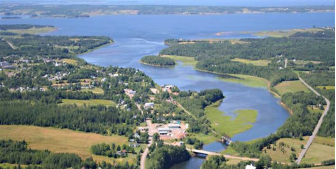
II.Natural Geography (environment and resources)
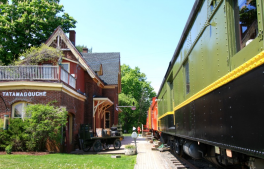
-Tatamagouche is a village in Colchester County, Nova Scotia, Canada.
-Tatamagouche is situated on the Northumberland Strait 50 kilometres north of Truro and 50 kilometres west of Pictou. The village is located along the south side of Tatamagouche Bay at the mouths of the French and Waugh Rivers. Tatamagouche derives its name from the native Mi'kmaq term Takǔmegoochk, translated as "Meeting of the waters".
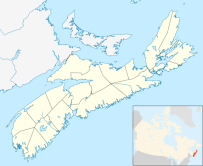
III.ECONOMY
-Average salary: $16.55 per hour
-Website: https://ca.indeed.com/salaries/general-worker-Salaries,-Tatamagouche-NS
IV.Industrial Characteristics
-Tatamagouche, NS, incorporated as a village in 1950, population 752 (2011c), 689 (2006c). The Village of Tatamagouche, located on Northumberland Steait, 67 km northwest of New Glasgow, takes its name from the MI'KMAQTakumegooch (loosely meaning "meeting of the waters"), describing its location where the French and the Waughs rivers meet. Acadians may have settled here as early as 1710, mining a deposit of copper ore. In the Expulsion of 1755 the outpost of 12 or so buildings was burned by the English. About 1771 Joseph Frederick Desbarres settled 18 Lunenburg families on a grant of 8100 ha in a futile attempt to manage a manor estate like an English landlord. In 1820 the shipbuilding industry began in earnest, enduring until the end of that century. The Intercolonial Railway arrived at Tatamagouche in 1887 but railway service was discontinued in 1986; the rails were removed in 1989 and the railbed is now part of the Trans Canada Trail. In 1955 the Atlantic Christian Training Centre (now Tatamagouche Centre), owned and operated by the United Church, was built.

-Website: https://www.thecanadianencyclopedia.ca/en/article/tatamagouche
V.Attractions
1.Rushtons Beach Provincial Park
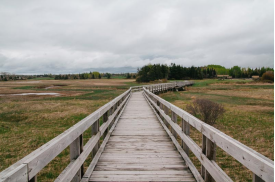
-Rushtons Beach Provincial Park, 4 km (2.5 mi) east of Brule (723 Highway 6) in the Northumberland Shore region, offers sheltered picnic grounds and has some of the warmest ocean water in Nova Scotia with broad sandbars at low tide.
-The salt marsh attracts a great variety of birds. Group use is available. Amenities include change house and vault toilets.
-Contact: parkinfo@novascotia.ca
-Location: 723 Highway 6, Marshville
2.Blue Sea Beach
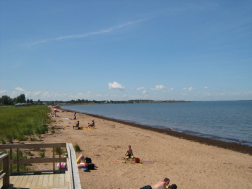
-Blue Sea Beach is a wide, 1.4 km long beach located in Malagash, on the Northumberland Strait. Great place for bird-watching and snorkelling.
3.Anna Swan Museum
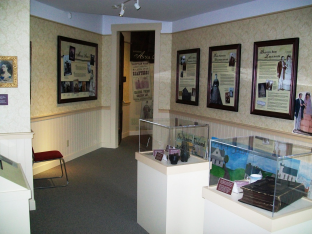
-At age 4 she was four feet in height, and by age 6 stood as tall as her average-sized mother. Anna reached a height of 7 feet 11 inches and weighed almost 400 pounds.
-The “Nova Scotia Giantess” was employed at P.T. Barnum’s American Museum in New York City for several years before touring Europe with a troupe of entertainers.
-In London Anna married her Prince Charming, Martin van Buren Bates, the 7 foot 9 inch ‘Kentucky Giant’, who had been an officer in the Confederate Army. Her wedding dress was a gift from Queen Victoria. The couple settled in Seville, Medina County, Ohio, where they built a giant house tailored to their needs. The marriage produced two giant babies; sadly, neither lived.
-Anna’s intriguing life story, marked by fame, fortune, happiness and sadness, is used in schools in Canada, the United States, Australia and New Zealand to promote literacy and to foster respect for and understanding and acceptance of those who are considered ‘different’. Anna learned to cope with her great height by heeding the advice of her maternal grandmother to “stand tall and be proud of your Highland ancestry”. She was well educated, enjoyed a lucrative career, travelled extensively and married a man who genuinely loved and revered her.
-Website: https://www.tatamagoucheheritagecentre.ca/anna-swan/
VI.History
-The first European settlers in the Tatamagouche area were the French Acadians, who settled the area in the early 18th century, and Tatamagouche became a transshipment point for goods bound for Fortress of Louisbourg.
-Battle at Tatamagouche
Main article: Naval battle off Tatamagouche
•During King George's War, New England was engaged in the Siege of Louisbourg (1745) in their efforts to defeat the French. On June 15, 1745, Captain Donahew confronted Lieut. Paul Marin de la Malgue's allied force who was en route from Annapolis Royal to Louisbourg. The French convoy of two sloops and two schooners and many natives in a large number of canoes was a relief effort of French and Mi'kmaq on their way to the fortress. Donahew drove the French ashore, preventing supplies and reinforcements from reaching Louisbourg before it fell to the English. The British reported there was a "considerable slaughter" of the French and natives. The battle was significant in the downfall of Louisbourg because Marin's relief envoy was thwarted.
-Expulsion of the Acadians
•The homes of the Acadians who lived in the village were burned as part of the Bay of Fundy Campaign (1755) during the French and Indian War. Tatamagouche and nearby Wallace, Nova Scotia were the first villages in Acadia to be burned because they were the gateway through which Acadians supplied the French Fortress Louisbourg.
•All that remains from that period are Acadian dykes and some French place names.
•Fort Franklin was built at Tatamagouche in 1768, named after Michael Francklin. (The fort was built immediately after the abandonment of both Fort Ellis (Nova Scotia) and Fort Belcher.)
-Protestant settlement
•Ten years later, on August 25, 1765, the land that became Tatamagouche was given to British military mapmaker Colonel Joseph Frederick Wallet DesBarres by the British Crown. DesBarres was awarded 20,000 acres (81 km2) of land in and around Tatamagouche on the condition that he settle it with 100 Protestants within 10 years. Low land prices in other colonies made attracting tenants difficult, but an offer of six years free rent to dissatisfied residents of Lunenburg was a moderate success in 1772.
•The earliest settlers of Tatamagouche from Lunenburg were families from Montbéliard on the French-German border near Switzerland. To escape religious persecution following the Edict of Fontainebleau, these families boarded rafts and drifted down the Rhine to Rotterdam. There the Scottish merchant John Dick was recruiting colonists and shipping them across the English Channel to be transported to Halifax, Nova Scotia. Those who survived the Atlantic crossing in 1752 and a difficult winter in Halifax had been taken to Lunenburg in 1753. These french-speaking Huguenots were often identified as Swiss in early census records to distinguish them from the Acadian French Catholics. Their french names have often been Anglicized as shown in parentheses. The earliest families included those headed by James Biguenet (Bigney), George Gretteau (Gratto), George Mettetal (Matatall), George Tetteray (Tattrie), John and Peter Maillard (Millard), John George and John Frederick Petrequin (Patriquin) and David, James and Matthew Langille.
•Protestant repopulation also grew considerably before the end of the century with a flood of Scottish immigrants following the Highland Clearances.
-Ship building and lumbering
•In the 19th century, like many other villages in the area, Tatamagouche had a sizable shipbuilding industry. Trees were plentiful and sawmills started appearing on area rivers, producing lumber for settlers. Builders needed the lumber to produce the ships and it was common to send a completed vessel overseas loaded with lumber.
•Generally, there were five types of vessels being built at Tatamagouche: the schooner, brig, brigantine, barque, and clipper ship. Of these, schooners were by far the most popular. There is also one barquentine on record as being built at Tatamagouche, the Yolande in 1883.
•Many of the larger vessels, such as the brigs, barques and brigantines, were loaded with lumber from the area and sailed to Britain, where first the cargo, and then the ship itself, were sold. Some of the ships sold immediately, while others could take years to find a buyer. Often, the owner would sail the ship over to arrange for its sale personally, other times they would be sold through a firm such as Cannon, Miller, & Co., who sold most of the Campbell brothers ships.
•The age of steam ended ship building in Tatamagouche.
-The Campbell Brothers
•On May 17, 1824, Alexander Campbell and partners William Mortimer and G. Smith launched their first ship on the French river, a 63-foot (19 m) schooner named Elizabeth. They launched several more ships together, until Alexander went into partnership with his brothers, William and James, in 1830. Their partnership ended in 1833 following a disagreement between Alexander and James. The brothers went their separate ways, each building ships for some time afterwards, but the list of ships built in Tatamagouche shows Alexander Campbell to be the most active of the three, with over 70 ships to his name.
•William built about a dozen ships after the breakup that varied in quality, size and type. Several of them were loaded with timber bound for the British Isles. His last ship was the Trident and in 1842 she ran aground off Newfoundland on her maiden voyage, leaving him near bankruptcy. He died a poor man in 1878, despite having held several other jobs.
•When William stopped building, Alexander took over his yard and attacked the market in full force. At the height of the ship building days he employed about 200 men. In 1850 he turned out eight ships.
-Infrastructure
•The Intercolonial Railway constructed its "Short Line" from Oxford Junction to Stellarton through Tatamagouche in 1887. The ICR commissioned the Rhodes Curry Company of Amherst to build a passenger station in the village immediately east of the creamery. The ICR was merged into the Canadian National Railways in 1918 and CN operated this line as part of its "Oxford Subdivision", servicing mainly agricultural communities, as well as the salt mines at Malagash and Pugwash as well as a quarry in Wallace. Passenger service through Tatamagouche was discontinued in the 1960s and the station was used as an office for railway employees handling freight until 1972 when it was closed and sold in 1976. CN discontinued freight service on the line in 1986 when the Oxford Sub was abandoned; the rails were removed in 1989.
•Today the passenger station is a bed and breakfast with restored historic rail cars located on the property. The rail line through the village is a recreational trail, designated as part of the Trans Canada Trail and the point where the Nova Scotia portion of the trail branches south to Truro, Halifax and southwestern Nova Scotia, making Tatamagouche a good starting point for a short waterfront walk or a major biking expedition.
VII.Other information
-Introduction
•Our quaint, little village radiates a palpable artistic and historical ambiance. In keeping with modern times, however, Tatamagouche is also a progressive and diversified community, boasting an impressive number of businesses and services.
•Located on the warm waters of Northumberland Strait, Tatamagouche is close to beautiful beaches, golf courses, and a ski hill, as well as being a destination for hunting, fishing, and off road enthusiasts.
•Offering a wide range of things to see and do for our many visitors, as well as a long list of amenities to our residents, Tatamagouche is a self-sufficient and growing community.
•So, whether you’re looking for a tourist destination, or a place to put down roots, come and browse our site, and discover why Tatamagouche is just a great place to be.
•Website: https://villageoftatamagouche.com/
VIII.Contact information
-Government
•Governing body: Radium Town Council
•Mayor: Clara Reinhardt
-Should you wish to speak with one of our Village Commissioners directly, please do not hesitate to contact them:
•Peter Pope, Chair 902-657-2993 Tyler Baird,
Vice-Chair Jim Baird ~ 902-956-1938
AJ Cunningham ~
-Website: https://villageoftatamagouche.com/contact-us/
